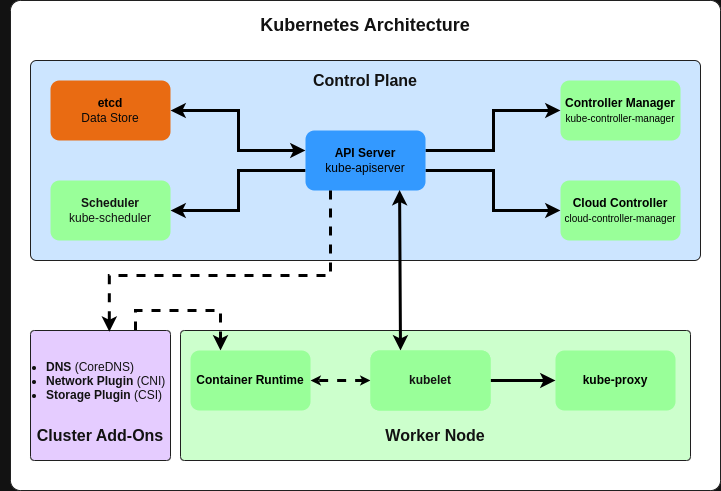In the diagram, indirect communication refers to connections between components that don't communicate directly with each other but interact through an intermediary component.
The dashed lines represent these indirect communications, indicating that:
These components don't have a direct API connection
- They may communicate through another component (typically the API Server)
- They might use a shared resource for coordination
- They could be passing events or messages through a queue or bus
Specific examples in the diagram:
kubelet to kube-proxy: These don't communicate directly. Instead, kubelet and kube-proxy both talk to the API Server independently. The kube-proxy watches for Service and Endpoint objects in the API Server, while kubelet reports node and pod status.
API Server to Add-ons: The API Server doesn't explicitly call the add-ons. Instead, the add-ons (like CoreDNS, CNI plugins) watch API Server resources and react to changes. The relationship is more observation-based than direct API calls.
Add-ons to kubelet: Components like CNI plugins interact with kubelet through filesystem hooks and interfaces rather than direct API calls. For example, when kubelet needs to set up networking for a pod, it calls the CNI plugin executable - it's an interaction, but not a direct API relationship.
The distinction between solid and dashed lines helps understand the architecture's coupling and dependencies - solid lines generally represent tighter coupling where one component directly calls another, while dashed lines represent looser coupling where components affect each other indirectly or through standard interfaces.
